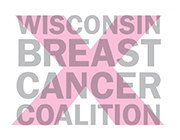Extended Environmental Exposures Annual Meeting – November 16-18, 2011, Cincinnati Ohio
Dawn Anderson, WBCC Executive Director
The Breast Cancer and the Environment Research Program (BCERP) is a national program to identify potential environmental causes of breast cancer. The annual conference is an opportunity for participating researchers, community partners and advocates to hear results from studies that have been published.
Since 2003 participating researchers have been looking specifically at predictors of early age at onset of puberty, which is associated with an increased risk of breast cancer. These “Puberty Studies” were epidemiologic studies in which cohorts of young girls (6-8 years of age) were enrolled and followed as they approached and entered puberty. Biomarkers for chemicals of interest were tracked in blood and urine samples, as was their development in areas considered hallmarks of the onset of puberty.
The second round of funding and research was begun in 2010. University of Wisconsin – Madison researchers, Dr.’s Michael Gould and Amy Trentham Dietz, received a grant as part of the “Windows of Susceptibility” studies that are looking at times in a woman’s life cycle during which it appears she is more vulnerable to environmental ‘hits’ that would make her more susceptible to the development of breast cancer later in life. This research is ongoing and findings have yet to be released.
The grants that are funding the research, from the National Cancer Institute (NCI) and the National Institute of Environmental Health Sciences (NIEHS), require that all institutions participating have Community Partners to help translate and disseminate research findings to the public. These public health messages will be key to changing behaviors and policy that could mediate the risk of breast cancer. WBCC serves as a Community Partner on Drs. Gould and Trentham-Dietz’s grant.
Published findings from the Puberty Studies seem to indicate an association between exposures to certain chemicals in our food, water, personal care and cleaning products and early onset puberty. This is considered a risk factor – the longer a women is exposed to estrogen (early menarche/late menopause) the higher the risk. Since these suspect chemicals are often endocrine disruptors that mimic estrogen in the body, the exposure is increased.
In the conference keynote address from Dr. Bruce Blumberg of the University of California – Irvine, an association was also indicated between body fat and earlier onset puberty. “Obesogens” are chemicals that inappropriately stimulate fat cell formation and fat storage. Emerging evidence suggests that some of these chemicals can alter gene expressions in fat cells – causing them to be bigger, and perhaps even promoting the development of fat at the expense of bone. The research pointed out that 90% of obese people regain lost weight within a year, suggesting that perhaps chemical exposures result in programming a “set point” weight during development. These exposures could be important very early in life – even prenatally.
The implications proposed in this line of research are that diet and (lack of) exercise are insufficient to explain obesity – particularly in young persons.
Dr. Jose Russo, of Fox Chase Medical Center, is widely thought to be the “father” of the concept of “Windows of Susceptibility” (WOS). In his address to the conference, he indicated his belief that puberty is perhaps the most critical window, because it is a time of high activity in cellular differentiation and sensitivity. He noted that in animal studies, pre-pubertal exposures increased susceptibility in younger animals (this could correlate to pre-menopausal breast cancer in humans), and pre-natal exposures increased susceptibility in older animals (this could correlate to post-menopausal breast cancer in humans).
Dr. Michele Forman of the University of Texas at Austin shared results from an epidemiologic study that showed that mothers who were highly active during pregnancy resulted in a 3 month delay in the onset of menarche in their daughters. This is thought to have a protective effect. With regard to pregnancy weight gain, mothers who gained less than 10 pounds or more than 40 pounds had daughters who reached puberty 30% earlier than others.
Dr. Susan Teitelbaum from the Mr. Sinai School of Medicine in New York spoke about the combined effects of multiple exposures, noting the difficulty of looking at individual agents in the lab and pointing out that we live in a sort of toxic “soup” in which our genes get bathed. The agents she is looking at with regard to puberty are methyl parabens, phthalates, and triclosan – all commonly found in personal care products. Her initial study results showed increased paraben urinary concentrations (in girls) with the frequency of product use per week and the number of products used in combination.
As part of the program, Community Partners for the research sites around the country are now working with consultants to help develop and then disseminate public health messages based on agreed upon findings from the Puberty Studies. WBCC looks forward to this continued collaboration on a topic we believe will move us towards prevention of breast cancer.
The conference program and slides/abstracts from a number of speakers may be found at: http://www.bcerc.org/2011mtg/program.htm
